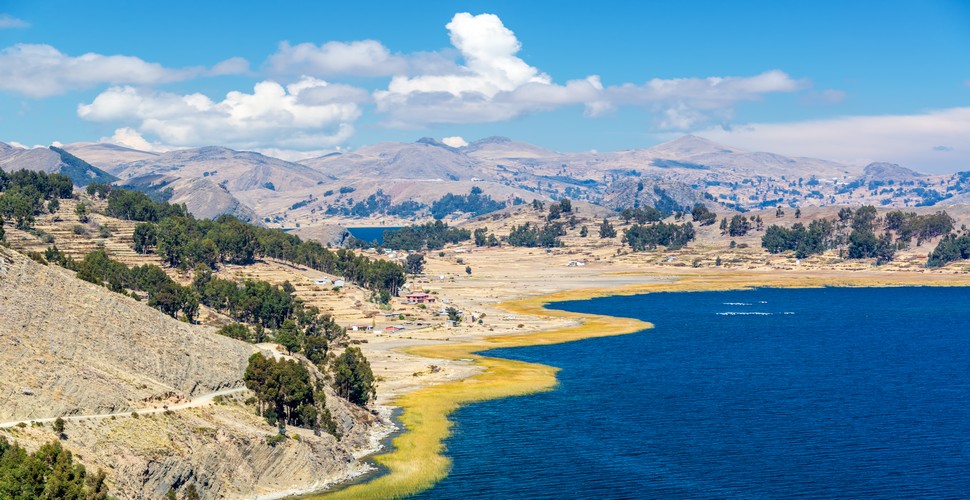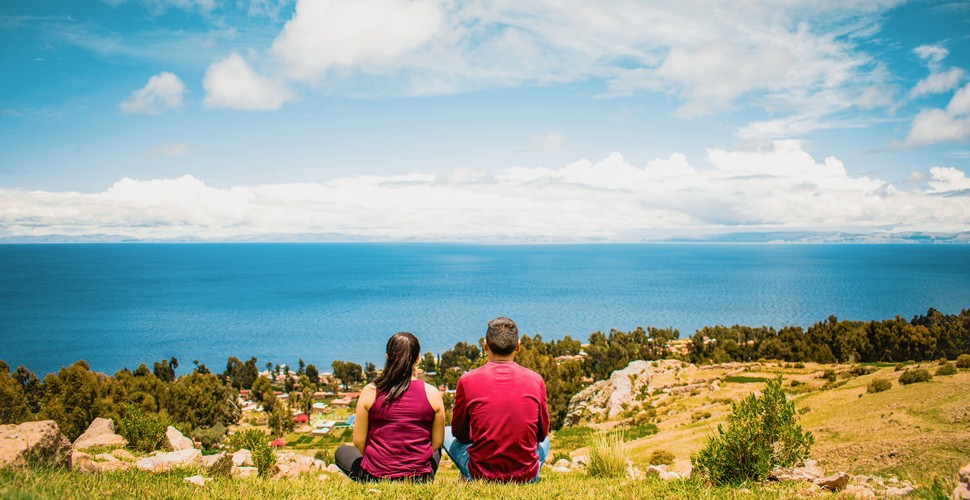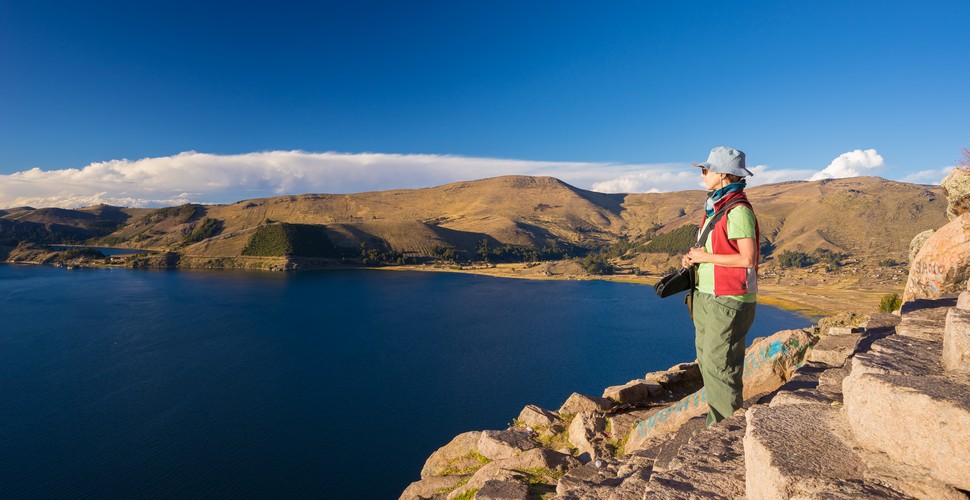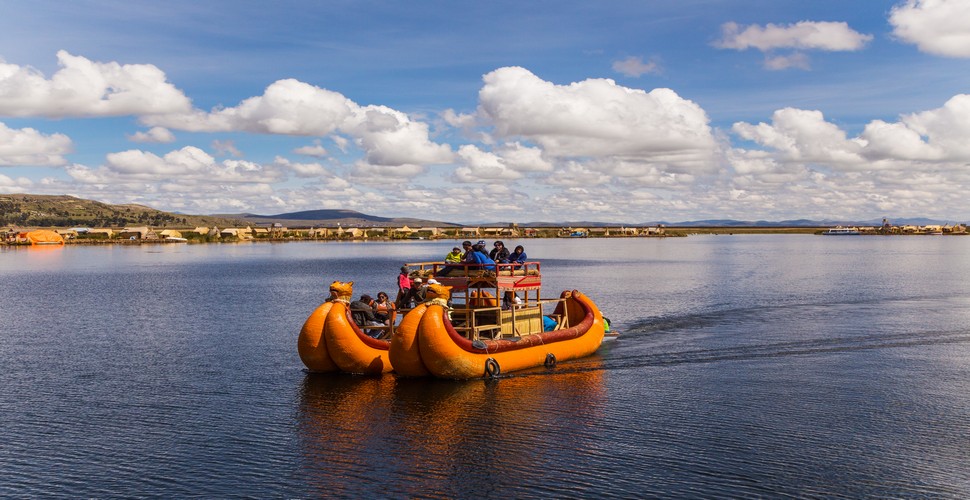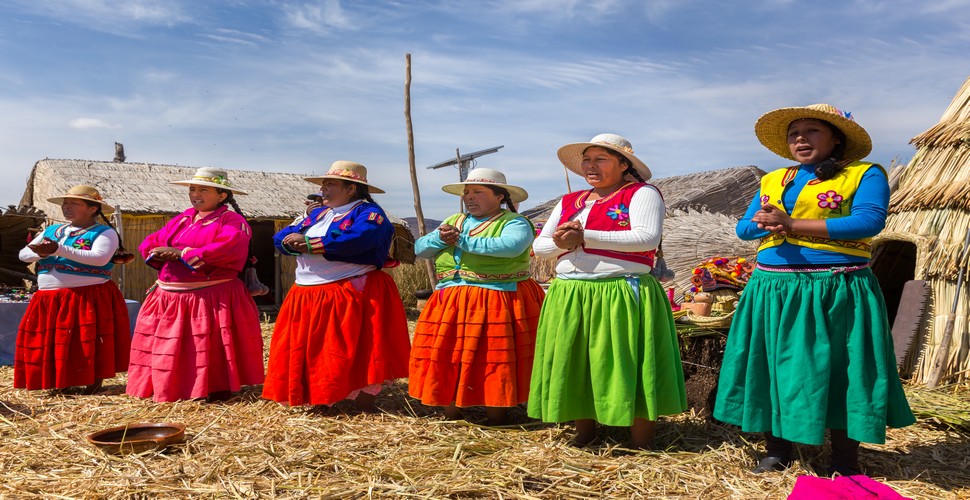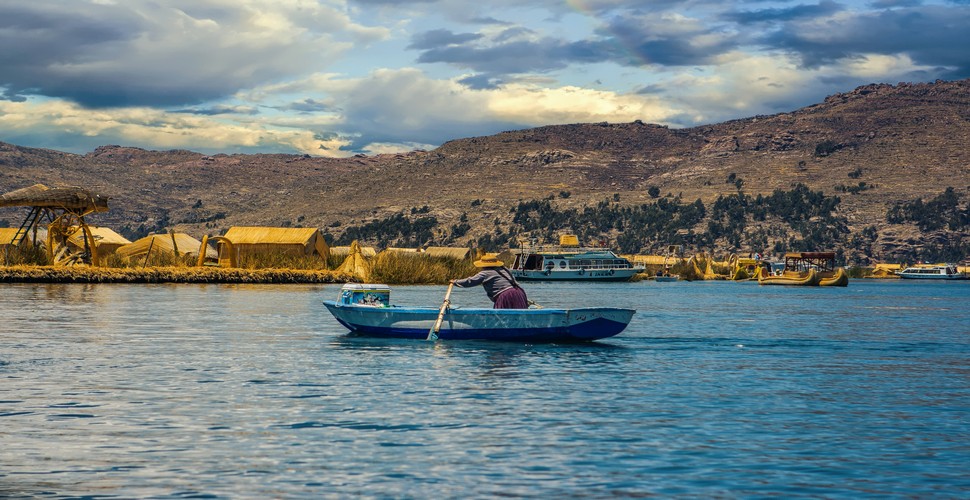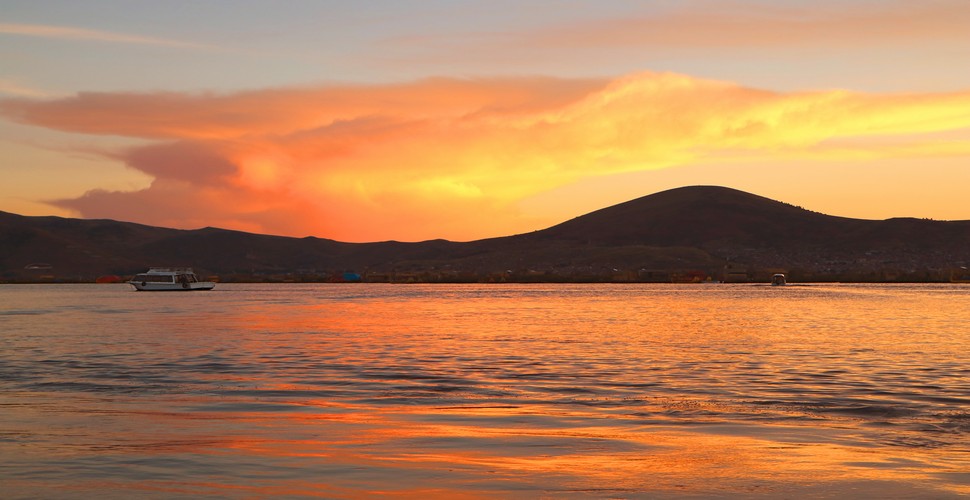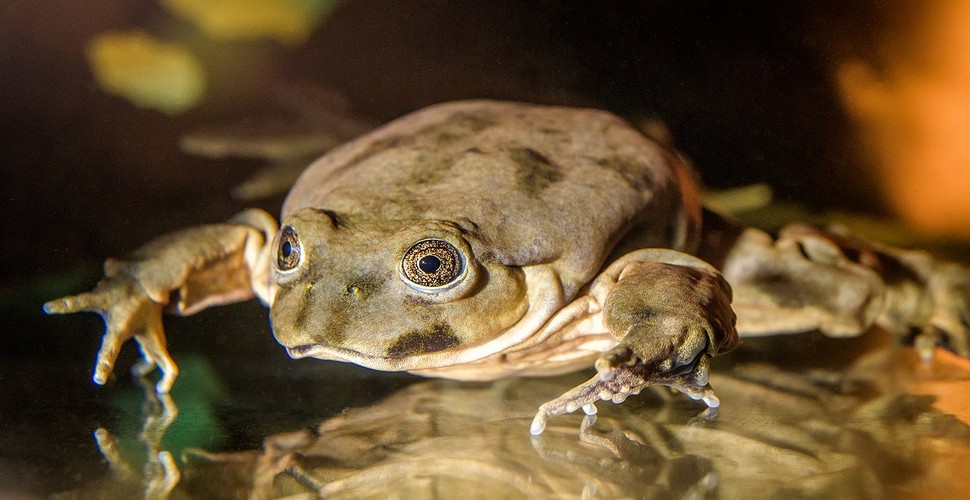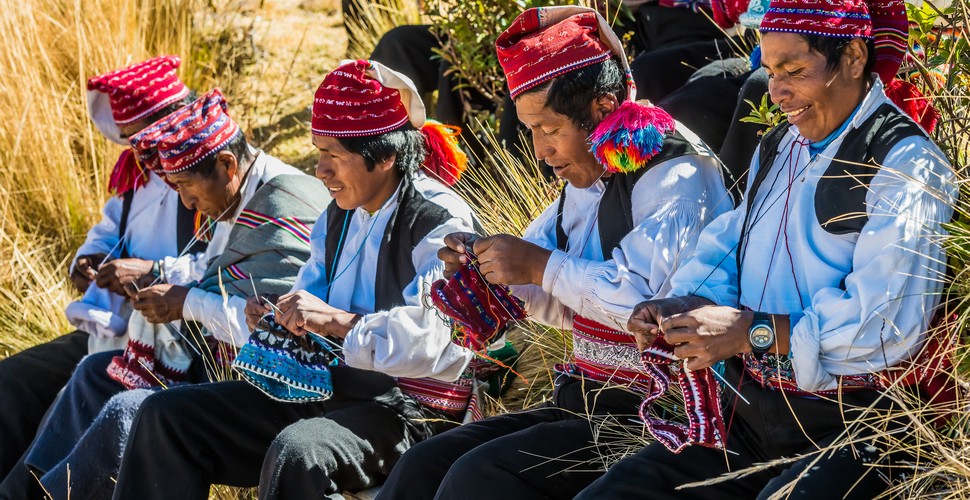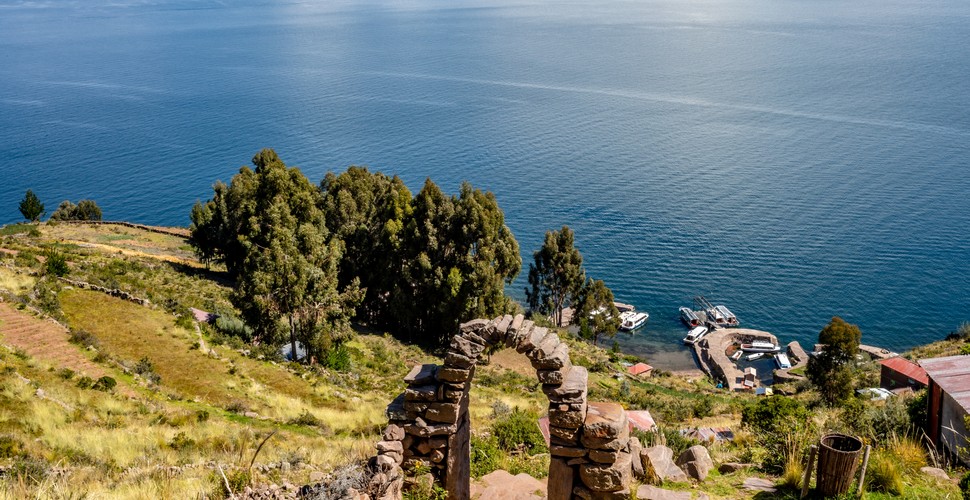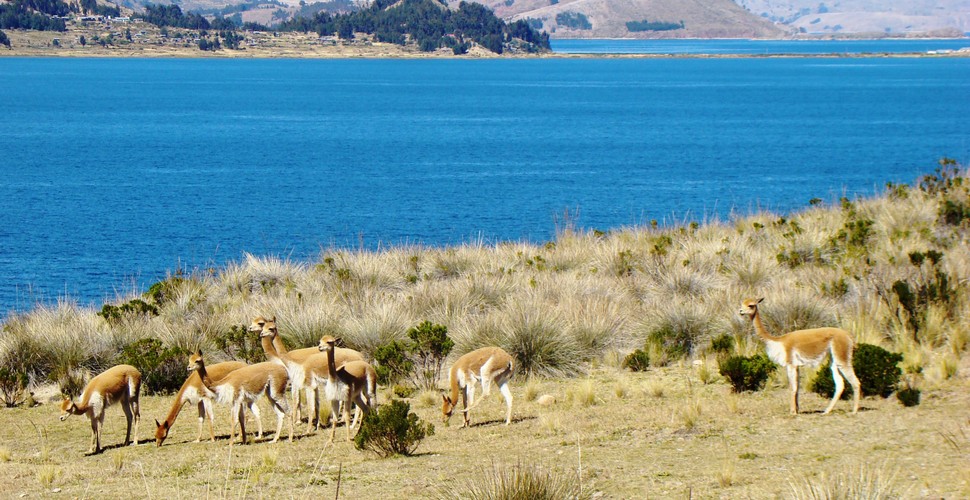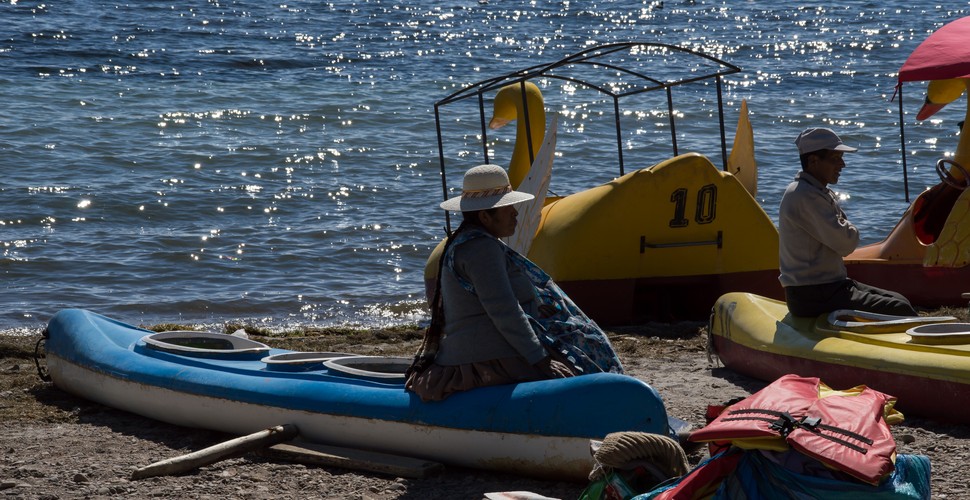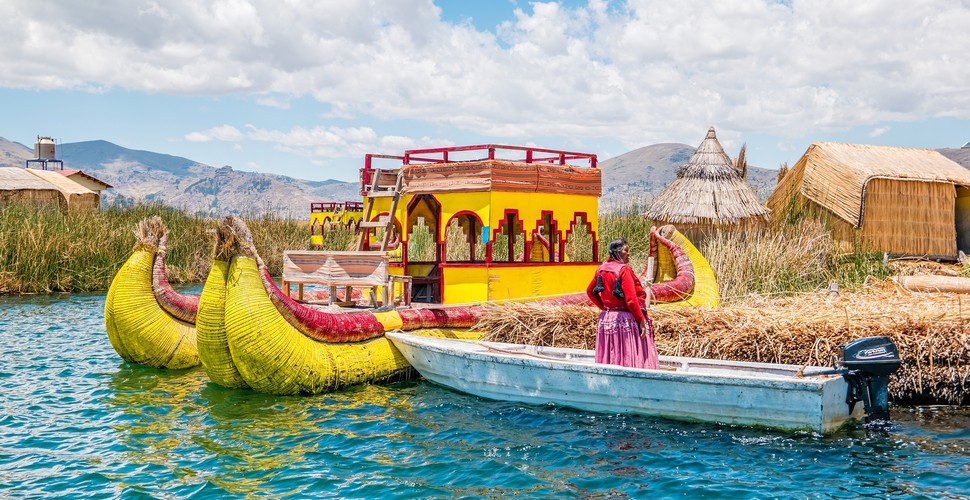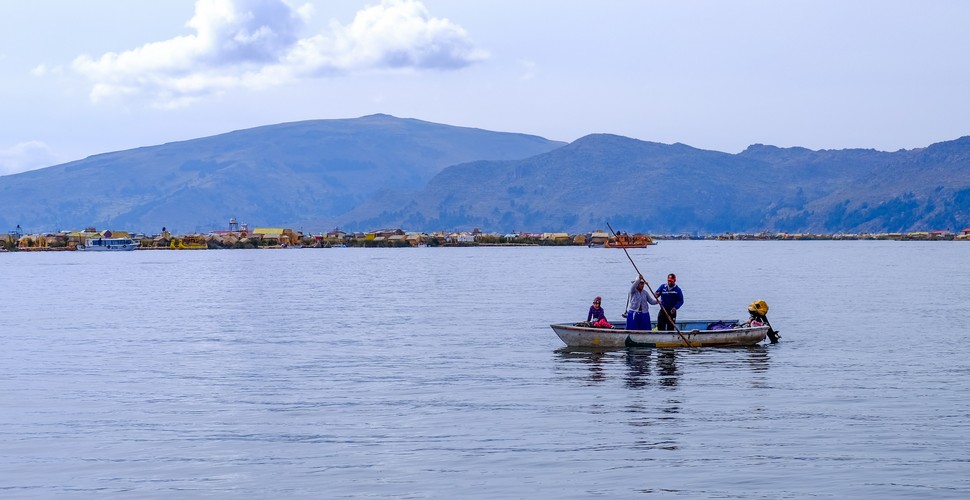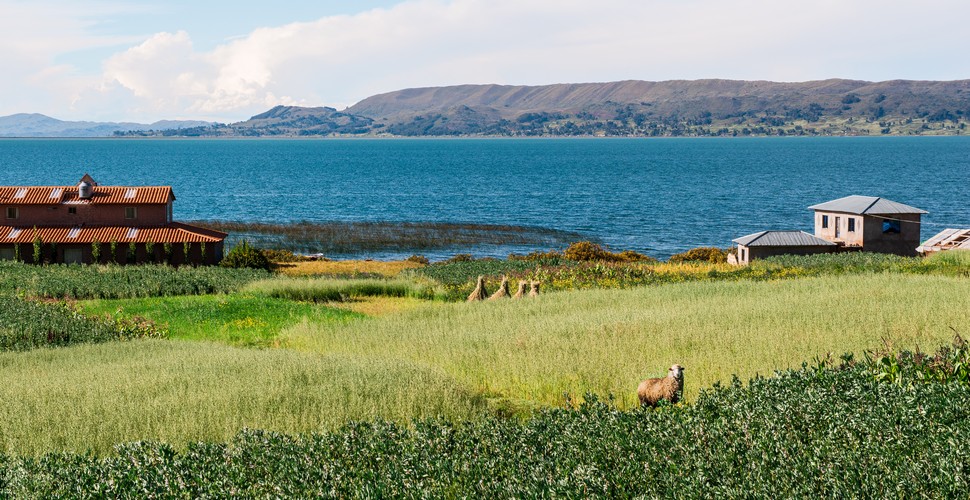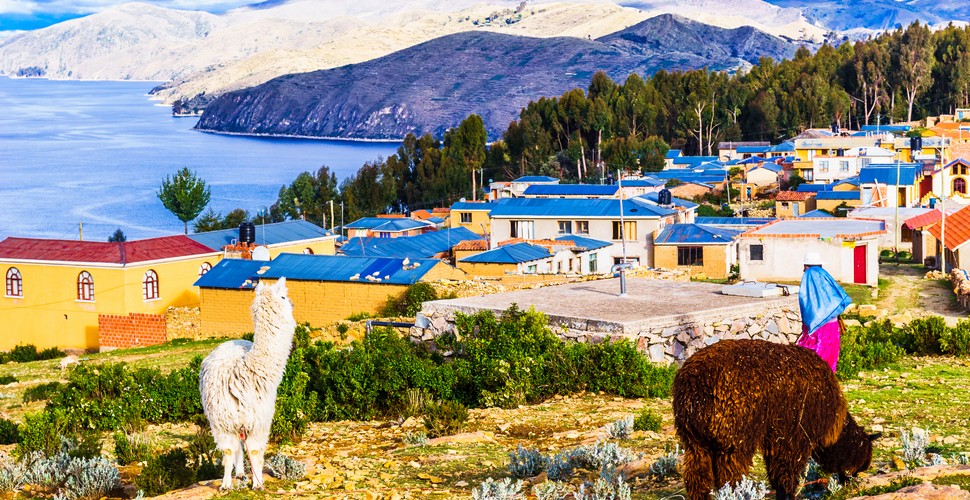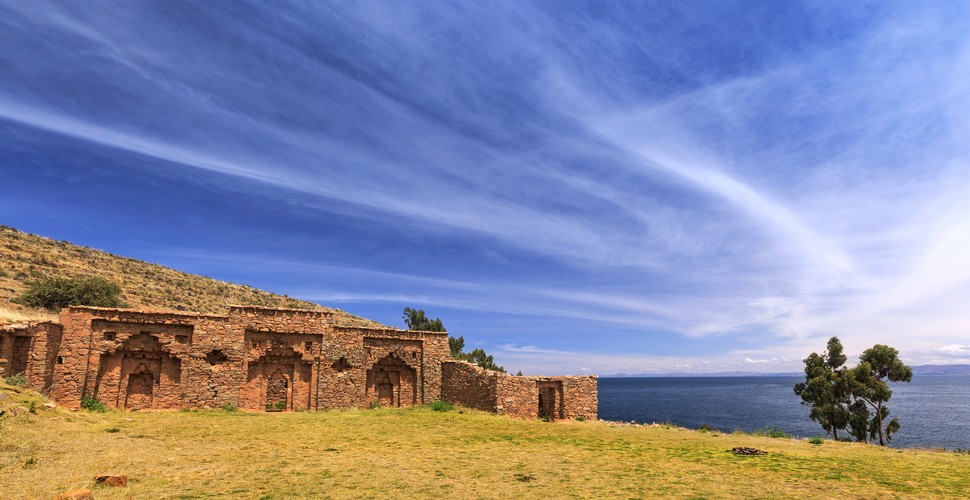

Claire Dean
Travel in South America is a joy to behold. The rich variety of destinations, experiences, landscapes and geography fascinated me so much, that I chose to relocate here, over 20 years ago! The best thing I ever did! Allow me to share my knowledge and passion for Central and South America with you and help you plan your holiday of a lifetime!

Visit Titicaca in South America On Your Peru Vacation Packages
Written by:Claire Dean
Last Update: 2025-01-03
Lake Titicaca is a spectacular mass of water, split almost 50/50 between the two countries of Peru and Bolivia. This lake is home to hundreds of rare animal species, floating islands, male knitters and a number of mysterious fables thrown in. In terms of a vacation or trip to this lake, on your Peru visit, adventure is never far away. Lake Titicaca´s weather is generally crisp and cool at the high elevation it is found, and the views are so much more than stunning. Rainy season runs from December to March which makes for slightly choppier waters. Titicaca in South America is one of the most remarkable and unique places to visit in Peru. Here are some interesting facts about this impressive lake.
Shores of Titicaca
Where Is Lake Titicaca?
If you are wondering about where Lake Titicaca is, Lake Titicaca lies in both of the South American countries of Peru and Bolivia. Considered the highest navigable lake in the world, Lake Titicaca is a stunning natural body of water that is situated 12,500 feet (3,800 meters) above sea level. This famous lake, which spans the border between northwest Bolivia and southeast Peru, is more than just a natural wonder; it is a spiritual and cultural entity rich in myth and history.
Lake Titicaca spans an area of over 8,710 square kilometers, measuring an astounding 120 miles (190 kilometers) in length and up to 50 miles (80 kilometers) in width. 3,450 square kilometers are in Bolivia and 5,260 square kilometers are in Peru. The Tiquina Strait, a short passageway that divides the water into two sections—Lago Pequeño (Little Lake) on the Peruvian side and Lago Huinaymarca (Small Lake) on the Bolivian side—further defines the lake's distinctive geography.
Beyond its astounding height and size, Lake Titicaca's depths conceal mysteries about its prehistoric past. The lake has a maximum depth of 281 meters and an average surface temperature of 55.4°F, with winter temperatures ranging from 51.8°F to 59°F. It is regarded as one of the oldest lakes on Earth, with an estimated age of more than three million years. Its magnificent blue waters mix in well with the wide sky, glimmering like a mirror to the heavens. The lake, surrounded by snow-capped hills, gives visitors the impression that they are sitting among the clouds, which is both awe-inspiring and humbling, at the same time.
Serenity and Peace at Lake Titicaca
Lake Titicaca - Interesting Facts
The Highest Lake in the World
Lake Titicaca is the highest navigable lake in the world, at a whopping 3,810 meters elevation/ 12500 ft. Lake Titicaca was formed in a dramatic fashion around 60 million years ago. A huge earthquake hit the Andes Mountains, causing them to split in two and creating a huge hollow. The space is filled with water from melting glaciers, creating this magnificent freshwater lake.
Stunning Titicaca
Titicaca is the Largest Lake in South America
With a surface area of 8,400 km2, of which 3,690 km2 is on Bolivian territory, Titicaca in South America has several depths, the maximum depth being 283 meters deep (930 feet). This makes it the biggest lake in South America.
Totora Boat near the Floating Islands
Lake Titicaca was the "Cradle of the World"
To the Incas, Lake Titicaca was the birthplace of the sun and its' people. In essence, they believe the world began at Lake Titicaca and therefore call it the "cradle of the world". Legend has it that the first Inca, Manco Capac, and his wife, Mama Ocllo were believed to have been born here also, making Titicaca incredibly sacred for the Quechua people.
The lake is Home to the Famous Floating Islands of the Uros People
Lake Titicaca has 41 islands, including the famous floating reed islands. The floating islands, called Uros, are actually man-made islands constructed from totora reeds collected from Titicaca itself and the shores of the lake! The floating islands were built by the Uros people who made them so they could move them if they were threatened by hostile invaders.
Uros People
One island has 180 Inca Ruins!
The island named Isla del Sol, or Island of the Sun, on the Bolivian side of the lake, is the largest island on Lake Titicaca and is home to 180 Inca ruins. If you are not going to the Bolivian side of the lake, you can also find ancient Inca ruins on the island of Amantani. There are two Inca sites here that sit on the two peaks of the island, Pachatata and Pachamama. The stunning landscapes in between offer spectacular views with perfect hiking terrain and impressive agricultural terraces between them.
The Lake was home to other pre-Inca civilizations
Before the Incas, other cultures resided on Lake Titicaca and left their marks on the culture and landscape, including the Urus, Pukara, Tiwanaku, and Colla civilizations.
Rowing around Uros
A Lost City in its Depths?
There are many tales of a lost city hidden in the lake, considering that Lake Titicaca is the largest lake in South America it is not hard to believe that it holds some secrets. In 1966 Argentine divers discovered a paved road similar to the Inca Trail, along with a group of sacred labyrinths. It was suggested that these trails and labyrinths could have been a path to Machu Picchu.
Taquile Island Heritage
The inhabitants of Taquile Island depict their culture, beliefs, and ancestral heritage in their textiles. Taquile was declared an Intangible Cultural Heritage of Humanity by UNESCO in 2005 for its weaving traditions. Visitors can explore the trails across the island, visit ancient agricultural terraces, and learn all about the island's ancestral weaving traditions.
Where does the Water come from to Fill Titicaca?
More than 25 rivers and many glaciers feed Titicaca in South America, but there’s only 1 river that flows outward. One small river, the Desaguadero, drains the lake at its southern end. This single outlet empties only 5% of the lake's excess water; the other 95% is lost by evaporation under the fierce sun and strong winds.
Titicaca Sunset
A Natural Protected Reserve
Lake Titicaca holds national reserve status and is protected by Peruvian law. It became a designated Ramsar Site in 1998, meaning it is a 'wetland of international importance'. This status is very important in conserving biological diversity and stresses the importance of protecting the large number of endemic species found in and around Titicaca.
Giant Frogs Live Here
Lake Titicaca is home to the telmatobius culeus, or giant frog, these frogs are exclusively aquatic and can be found at depths of up to 100 meters. These creatures can measure up to 14.5cm, which is big enough however Jacques Cousteau the French explorer, claimed to have come across a giant frog measuring 50cm in the '70s!
Giant Titicaca Frog
The Best Things To Do On Lake Titicaca
Visit Taquile Island
Situated on the Peruvian side of Lake Titicaca, Taquile´s remote location has allowed locals to continue their traditions without too much Western influence. Stunning lake and mountain landscapes and spectacular weaving traditions await you on Taquile. Taquile Island is seemingly on top of the world. In the middle of the Peruvian half of Lake Titicaca, the shores of Taquile sits at 12,959 ft (3,950 m) above sea level, while its highest point reaches 4,050 m. Despite its breathtaking elevation, the island’s size is pretty modest at 5.72 km², it is still however the second largest Peruvian island on the lake after Amantaní island. Taquile is 45 km from Puno on the lakeshore and it takes about 3 hours by boat to reach the island from Puno. On their arrival, the Spanish imposed cultural restrictions on the inhabitants of the island. For example, they weren’t allowed to wear traditional Inca clothing but had to wear "campesino", or peasant-style clothing instead. However, because of the island’s remote location, especially at a time without motorized boats, many other local customs remained intact. Today’s islanders, numbering around 2,200, continue the generations-old tradition of subsistence farming and fishing. Taquile today is famous for its weaving tradition. Weaving is, of course, an integral part of local culture in many parts of Peru. It is a way for indigenous peoples to represent their history and society with geometric and natural shapes as well as colors. The weavers of Taquile Island, in particular, have an interesting tradition where both women and men take up the loom. Taquileños are among the few indigenous communities in Puno to forgo Western dress and keep their traditional garments. The patterns and colors may have evolved over time, but the meaning is still present in their work. Even UNESCO has recognized their incredible local art by recognizing Taquile and Its Textile Art as a “Masterpieces of the Oral and Intangible Heritage of Humanity” in 2005.Taquile is a very peaceful, agricultural island community. One of Titicaca's non-floating islands, Taquile is a peaceful place that sees fewer tourists than the Uros. Located 25–30km across the water from Puno, it lies just beyond the outer edge of the Gulf of Chucuito. Taquile is arguably the most attractive of the islands hereabouts, measuring about 1km by 7km. Significant amounts of ancient terracing produce horizontal striations along the steep-sided shores. Here, local people grow potatoes, corn, broad beans, and hardy quinoa, the region's main crops. Today, the island is still very traditional. There is no grid-connected electricity on the island, though there is a solar-powered community loudspeaker and a growing number of individual houses with solar lighting. The views are beautiful from this island. In the square, you can shop at the textile store. There is often a bit of music and dancing going on.
Taquile Island
Do a Homestay on Amantani Island
Lake Titicaca straddles the border between Bolivia and Peru, with impressive sights on both shores. Amantani Island is another "fixed" island on Lake Titicaca. The villagers on Amantani Island take turns hosting travelers, opening their homes to visitors who participate in a homestay activity. This offers the perfect insight into the authentic Quechuan culture on the lake. Amantani has a population is just 4000, and is a few kilometers north of the smaller Taquile Island, and many tours pass through the region without continuing to Amantaní. Still, a stay here is unforgettable, and it's well worth making your way to this remote corner of Peru. Almost all trips to Amantaní involve an overnight homestay with islanders, giving you a privileged glimpse into the local way of life. The island is very quiet, with no roads or vehicles – you won't even see a dog, as they aren't allowed. Isla Amantaní boasts lovely views, too. Several hills are topped by ruins, among the highest and best-known of which are Pachamama (Mother Earth) and Pachatata (Father Earth). These date to the Tiwanaku period, named for a largely Bolivian culture that appeared around Lake Titicaca and expanded rapidly between 200 BC and AD 1000. These Ancient Incan ruins on top of both peaks are generally only accessible on the 3rd Thursday of January, each year. At this time, the residents of Amantani Island divide in half, with some congregating at Pachatata, and the rest at Pachamama, for their annual Feast Day. The Amantani community will allocate your accommodation on the island according to a rotating system. Please respect this process, even if you are with a guided group. There’s no problem with asking for families or friends to be together. All visitors eat at their homestay, and the meals typically include island staples like fish and quinoa. There are small stores for snacks, too, however.
Amantani Island
Visit Suasi Island
Suasi Island is the only privately owned island on the Peruvian side of Lake Titicaca. This tiny Titicaca island is home to Martha Giraldo’s one-of-a-kind Suasi Lodge, where the focus on providing excellent service in a remote location coupled with beautiful and fragrant gardens, swaying hammocks, and cozy fireplaces, and a plethora of wildlife make the long journey worthwhile. This Andean Cottage has its own personal dock and beach area, porch, gardens and hammocks. The cottage integrates into the natural environment and provides a tranquil secludedness, making this personal refuge perfect for a private family retreat or even a romantic getaway. Try taking photos of the hummingbirds as they swooped by, or head to the island’s highest point, Itapilluni to view the spectacular sunset. Witness several of the island’s diverse flora, including a bright red, trumpet-shaped Cantuta flower, Peru’s national flower. Visit the corral, where the island’s herd of alpacas rested each evening, and marvel at the island’s wild herd of rare vicunas another member of the camelid family. Isla Suasi as you may have guessed is the place to come in the Puno region for peace and tranquillity. It’s a great destination to reconnect with yourself, family, and friends and take time to reflect on your adventure in Peru. The views and gardens are absolutely stunning and the accommodation is perfect for the location of the island. A stay on Suasi is designed to allow you to disconnect from the modern world, relax, and enjoy the lake. However, if you want to try something a bit more active Pepe, the Island’s on-site guide can help you out. Head down to the beach, pick a canoe, and paddle around the island. Get up close and personal with the island’s cormorant population at their nesting site on the south of the island from February to October. If you want a less active option, book a guided zodiac ride around the island in the afternoon.
Vicuñas on Suasi Island
Kayaking on Lake Titicaca
Kayaking is one of the few available water activities on Lake Titicaca. Kayaking on Titicaca is over a short distance. You can book a tour even if you have no paddling experience. Kayaking tours generally start at 8 am, or an alternative 10 am pick up from your accommodation in Puno. You will then take a short drive to Coya Point, located on the north side of Puno where the kayaking companies are based. Here, you will get a safety briefing and a life jacket. You will spend about 2-3 hours on the water, paddling beside totora reeds where you can see waterbirds close up. With the stops in between, it is about 1.5-2 hours of actual kayaking at a leisurely pace.
Kayaks on Titicaca
Visit the Floating Islands
Only six hundred Uros people are living on the islands these days, and a lot of the population is mixed-race, with Quechua and Aymara blood. When the Incas controlled the region, they considered the Uros so poor that the only tribute required was a section of hollow cane filled with lice. Life on the islands has undoubtedly never been easy, and the inhabitants must go some distance to find fresh water. The base of the reed islands rots so rapidly that new matting made of the totora has to be constantly added above. The floating Islands last around twelve to fifteen years, and it takes two months of communal work to start a new one. Visit these floating islands for incredible insight into the way of life of the Uros people.
Uros Floating Islands
Catch your Lunch at the Lake
Fishing activities used to be as important as agriculture for the subsistence of the people of Titicaca. Unfortunately, in 1940 extraneous fish species such as trout and catfish were introduced. These large fish have taken over the native small species. Today, overfishing has dramatically reduced the number of fish, and the few fishermen who still dare to go out to the lake now use fishing nets. Fishing the native Karachi fish has been a tradition for generations, and they are getting harder to catch due to their decreased numbers and other fishy predators. The fishermen leave at sunset to throw nets and return in the early morning to pick them up. Going out with these fishermen on Lake Titicaca is a beautiful adventure to appreciate the evening light on a magnificent lake and connect with the magic that emanates from it. This activity is ideal for travelers who love adventure and can withstand the cold of the Andes on a lake at 3800 meters above sea level.
Fishing on Titicaca
Visit Peninsula Villages
While the Islands of Titicaca get a lot more attention, The peninsula villages on the mainland also depend on Titicaca and offer a more authentic experience of the world's highest navigable lake. Llachon, on the tip of the Capachica Peninsula, is a scenic, off-the-beaten-track destination. A small community will welcome you and be quickly introduced to an intensive cross-cultural experience. Observe their traditions and participate in an ancient ceremony to learn about their magical world. Then experience the preparation of "Pachamanca," a traditional way of cooking meat, fish, and potatoes using underground ovens - one of Peruvian cuisine's main dishes. Luquina is a small village on the Chucuito Peninsula of Lake Titicaca. This is a lesser-visited village where traditions and lakeside life can be experienced at their most authentic. Have the opportunity to participate in their daily activities such as sheep grazing, working in the crops, or even learning to milk a cow.
Luquina
Visit The Bolivian Side of Lake Titicaca
Isla Del Sol
Venturing across the border to Bolivia, Isla del Sol is a tranquil escape to nature, hiking, local island life, ruins, and sweeping views of Lake Titicaca. Those traveling across South America, regularly recommend a stop at Isla del Sol, Bolivia. We’re here to continue that advice, show how to get to Isla del Sol from Copacabana by ferry, and why it’s worth it to stay overnight. There’s just something about Isla del Sol. This island is a tranquil little escape from the hustle and bustle of South America. Isla del Sol itself boasts a stunning landscape that juts up dramatically out from Lake Titicaca. There is a lot of Inca-related history behind the stunning Isla del Sol. According to Incan legend the principal God, Inti (the Sun God), lived on one of the islands on the Bolivian side of the lake, the Isla Del Sol (Island of the Sun). Legend has it that the island is where Inti created his son and daughter, Manco Capac and Mama Ocllo, the very first Incas who later traveled north to found Cusco at the heart of what would become the Inca Empire. The rest as they say is Inca history!
Llama on Isla del Sol
Isla de La Luna
An hour's boat ride from Isla del Sol, you can find The Moon Island or Isla de la Luna. There is one interesting archaeological site on the island, The temple on Isla de la Luna was once home to chosen women during the Inca Empire. Considering this temple is the only remaining structure from that time, archaeologists have assumed that the entire island served as a sanctuary for sacred female energy. The impressive views of Lake Titicaca and the nearby Bolivian glacier-peaked Andes from the bluffs on the island are a sight to behold. A few of the local families offer rooms for rent and meals at a reasonable price. Given the entire Island has 25 families, including one church, one school, and critical to all Bolivian villages, one football field, there wouldn't be much to do other than explore the rest of the island, relax, and watch the sun go down. Fishermen on the island are happy to engage with tourists, sharing their trout-catching wisdom. Now an abundant food source for all Lake Titicaca inhabitants, trout were actually introduced to Lake Titicaca’s fish population in 1939, to complement the existing killifish and catfish.
Moon Island, Bolivia
Whichever of these aspects of Lake Titicaca grabs your attention, you can be sure that a trip to Lake Titicaca will be an awesome, and unforgettable experience. Lake Titicaca has many activities on offer. Find out more here from one of our experienced Travel Designers to help you visit the highest navigable lake in the world.


